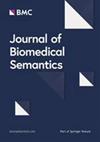Steps towards a Semantics of Dance
IF 2
3区 工程技术
Q3 MATHEMATICAL & COMPUTATIONAL BIOLOGY
引用次数: 5
Abstract
As formal theoretical linguistic methodology has matured, recent years have seen the advent of applying it to objects of study that transcend language, e.g., to the syntax and semantics of music (Lerdahl & Jackendoff 1983, Schlenker 2017a; see also Rebuschat et al. 2011). One of the aims of such extensions is to shed new light on how meaning is construed in a range of communicative systems. In this paper, we approach this goal by looking at narrative dance in the form of Bharatanatyam. We argue that a semantic approach to dance can be modeled closely after the formal semantics of visual narrative proposed by Abusch (2013, 2014, 2021). A central conclusion is that dance not only shares properties of other fundamentally human means of expression, such as visual narrative and music, but that it also exhibits similarities to sign languages and the gestures of non-signers (see, e.g., Schlenker 2020) in that it uses space to track individuals in a narrative and performatively portray the actions of those individuals. From the perspective of general human cognition, these conclusions corroborate the idea that linguistic investigations beyond language (see Patel-Grosz et al. forthcoming) can yield insights into the very nature of the human mind and of the communicative devices that it avails.走向舞蹈的语义学
随着正式理论语言学方法论的成熟,近年来出现了将其应用于超越语言的研究对象的出现,例如,音乐的语法和语义(Lerdahl & Jackendoff 1983, Schlenker 2017a;另见Rebuschat et al. 2011)。这种扩展的目的之一是揭示在一系列交际系统中如何解释意义。在本文中,我们通过观察巴拉塔那塔姆形式的叙事舞蹈来实现这一目标。我们认为,舞蹈的语义方法可以在Abusch(2013, 2014, 2021)提出的视觉叙事的形式语义之后紧密建模。一个核心结论是,舞蹈不仅具有视觉叙事和音乐等其他基本人类表达方式的特性,而且与手语和非手语的手势也有相似之处(例如,参见Schlenker 2020),因为它利用空间来跟踪叙事中的个体,并表演地描绘这些个体的动作。从一般人类认知的角度来看,这些结论证实了一种观点,即超越语言的语言研究(见Patel-Grosz等人即将出版)可以深入了解人类思维的本质及其所利用的交际手段。
本文章由计算机程序翻译,如有差异,请以英文原文为准。
求助全文
约1分钟内获得全文
求助全文
来源期刊

Journal of Biomedical Semantics
MATHEMATICAL & COMPUTATIONAL BIOLOGY-
CiteScore
4.20
自引率
5.30%
发文量
28
审稿时长
30 weeks
期刊介绍:
Journal of Biomedical Semantics addresses issues of semantic enrichment and semantic processing in the biomedical domain. The scope of the journal covers two main areas:
Infrastructure for biomedical semantics: focusing on semantic resources and repositories, meta-data management and resource description, knowledge representation and semantic frameworks, the Biomedical Semantic Web, and semantic interoperability.
Semantic mining, annotation, and analysis: focusing on approaches and applications of semantic resources; and tools for investigation, reasoning, prediction, and discoveries in biomedicine.
 求助内容:
求助内容: 应助结果提醒方式:
应助结果提醒方式:


